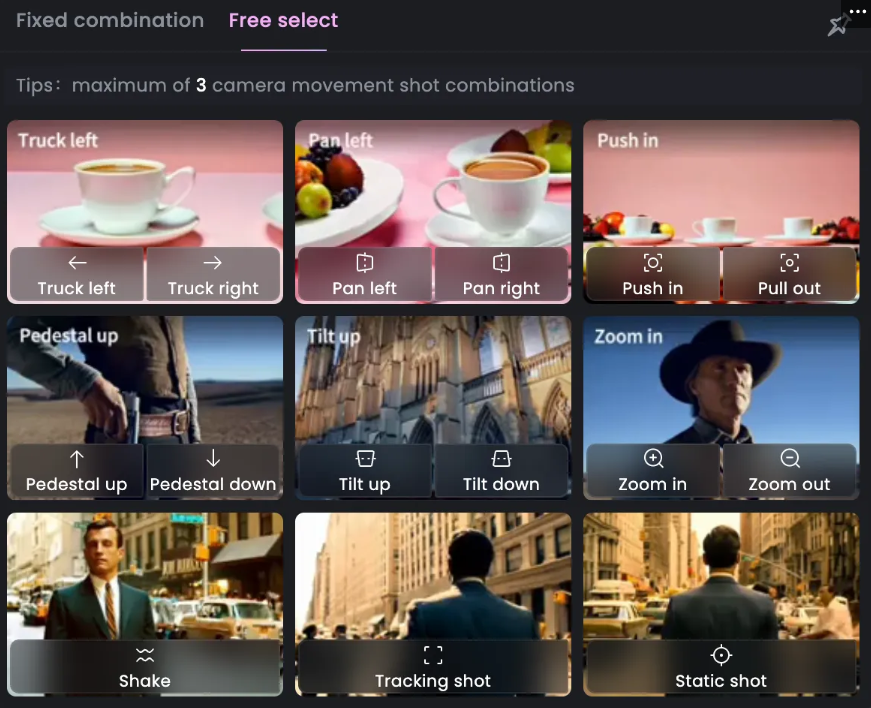
Hailuo T2V-01 Director
In January 2025, Hailuo AI introduced the T2V-01-Director Model with several new features that include enhanced accuracy, reduced randomness, and extended camera movement control through natural language commands. This gives users greater control over the final video output. Try out Hailuo AI below!
Key Features
- Natural Camera Control: Manipulate camera controls using simple text prompts
- Multi-Angle Camera Shots: Use varied camera movements in one visual sequence
- Reduced Randomness: Gain more precision over the video output to match creative intent.
Natural Camera Control
With the Hailuo T2V-01-Director model, it becomes possible to control the camera movement and angles using natural language commands. For instance, you can tell it to zoom in or out, pan left to right, and more across various scenes using simple text prompts.
🎥Introducing Hailuo T2V-01-Director Model: Control Your Camera Like a Pro!
— Hailuo AI (MiniMax) (@Hailuo_AI) January 28, 2025
📷 Direct with natural language or simple commands.
🔄 Combine movements for flawless, cinematic transitions.
✨ What’s New:
- Reduced randomness in movements.
- Enhanced control accuracy.
-… pic.twitter.com/lhZV92CBaD
Multi-Angle Camera Shots
Using the T2V-01-Director model, you can produce all kinds of cinematic-level shots by combining multiple camera movements using your text prompts. This means you can achieve multi-angle results that make it possible to produce stunning sequences.

| Prompt with [Camera Movement] | Generate Video |
| [Push in]A lamb stands in the snow. | |
| [Truck left,Pan right]A woman is drinking coffee. | |
| A man picks up a book [Pedestal up], then begins reading it [Static]. |
Reduced Randomness
The new T2V-01-Director model can be relied on to deliver fewer uncertainties and more predictable output. It also gives users more accurate control over the camera movements, making producing complex visuals easier.
| Text Prompt | Camera Movement | Generate Video |
| The shot pans left while tilting upward, starting from a small rabbit looking up to the left, gradually moving toward the sky, with a balloon floating upward along the rabbit's line of sight. | [Pan left] / [Tilt up] |
Comparison of T2V-01 & T2V-01-Director
T2V-01 is the first text-to-video AI model on Hailuo that can be used to produce novel videos using text prompts. This makes it suitable for creating various visual scenes for simple storytelling.
T2V-01-Director is the improved version that offers direct camera control using text commands such as zoom-ins, tracking shots, etc. It also lets users combine multiple camera motions with more predictable video output.
Discover Hailuo AI's Other Models
FAQs
Why should you use T2V-01-Director?
With Hailuo T2V-01-Director, it becomes easier to direct camera shots like a professional. This makes it possible to achieve the results that you want without having to worry about random camera movements that can lead to unwanted visual sequences.
Is T2V-01-Director free to use?
You can head to Hailuo and try out the T2V-01-Director via the free trial but this only provides users with limited feature access.
How long does T2V-01-Director take to generate videos?
You can typically expect the T2V-01-Director AI model to produce a video within minutes. However, do keep in mind that this can sometimes vary. In some cases, the generation may take slightly longer depending on the complexity of the visual sequences.
Does T2V-01-Director generate better quality videos than T2V-01?
The video output quality between these two AI models is relatively similar. However, by choosing T2V-01-Director, you can expect the generation to be more predictable with the added benefit of being able to customize the camera shots to your exact preferences.
How many multi-angle shots can T2V-01-Director support per video?
You can include as many different camera movements as you need that can fit within the visual sequence. However, it is important to ensure the camera shots you input in the description make technical sense to avoid any unpredictable or poor results.
